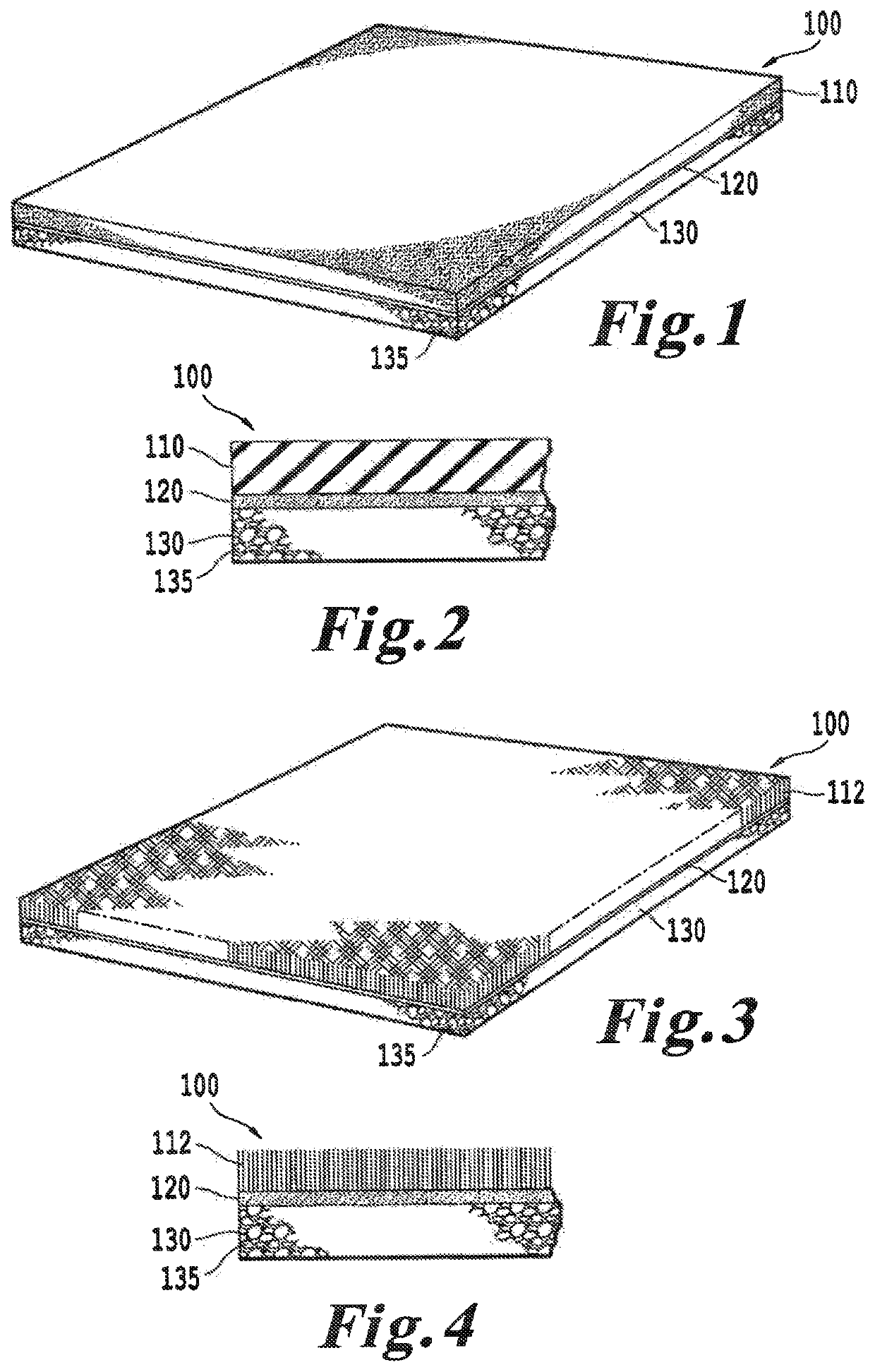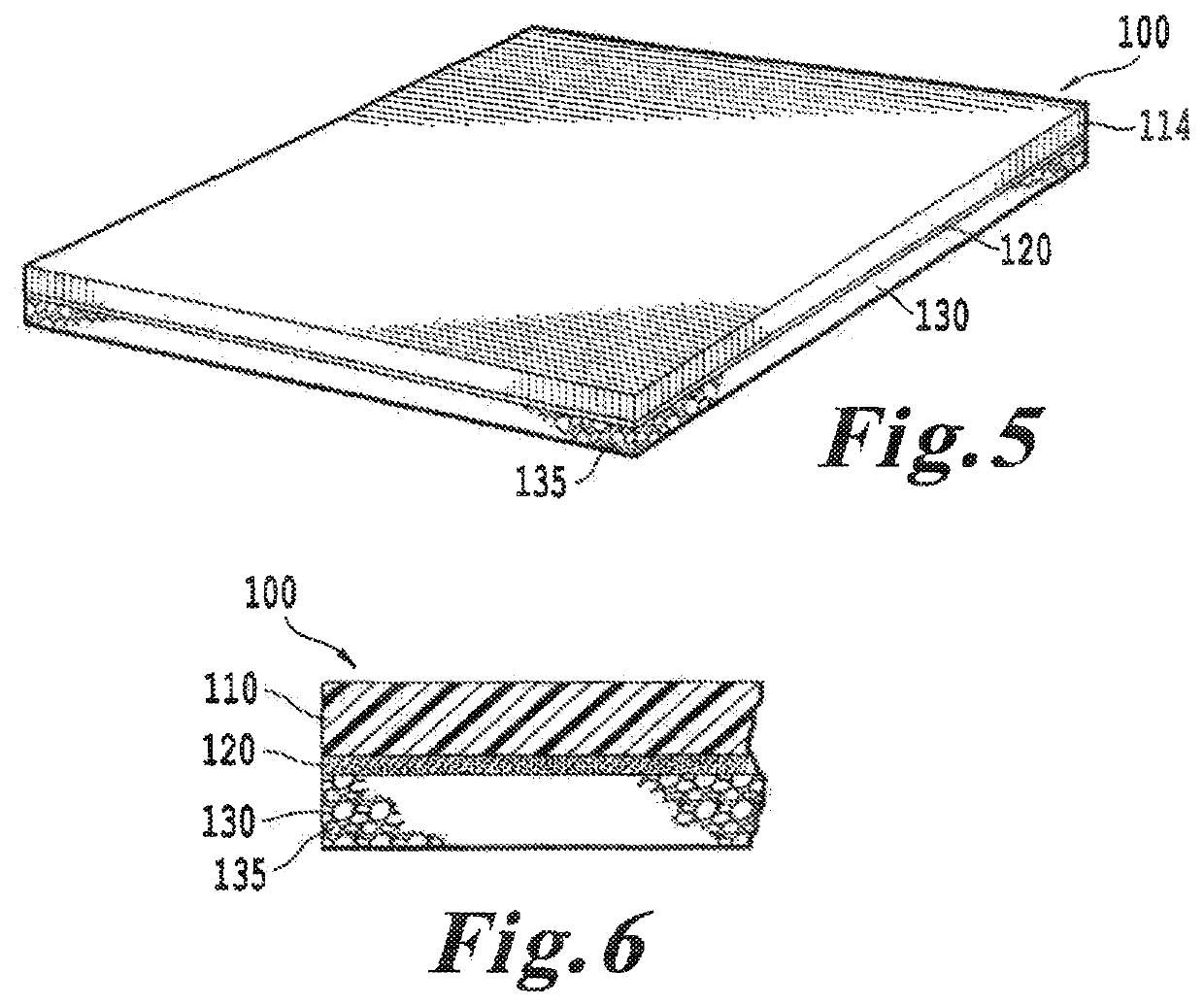Recycled rubber backed cushioned vinyl
a rubber backing and cushioning technology, applied in the direction of final product manufacturing, controlling lamination, synthetic resin layered products, etc., can solve the problems of difficult disposal of conventional carpets and matting, large amount of solvents and/or adhesives, harmful to the environment, etc., and achieve the effect of sufficient mass, sufficient weight, and sufficient dimensional stability
- Summary
- Abstract
- Description
- Claims
- Application Information
AI Technical Summary
Benefits of technology
Problems solved by technology
Method used
Image
Examples
Embodiment Construction
[0083]Referring now to the drawings, wherein like reference numerals designate identical or corresponding parts throughout the several views.
[0084]With reference to FIG. 1, one example of a surface covering according to the present invention is depicted in isometric view. The product 100 includes a layer of facing material 110 directly bonded to a layer of backing material 130 via a layer of bonding material 120. In other words, the bonding material 120 is sandwiched between the facing material 110 and the backing material 130.
[0085]In the depicted embodiment, the facing material 110 is a rubber material such as EPDM (ethylene propylenediene Monomer (M-class) rubber). However, other facing materials may be used. The bonding material 120 is a heat-activated bonding material, i.e., one that is typically in solid form at room temperature 21° C. (70° F.) and becomes much less viscous at higher temperatures, typically about 48° C. (118° F.) and above. In one example, the bonding material...
PUM
| Property | Measurement | Unit |
|---|---|---|
| temperature | aaaaa | aaaaa |
| temperature | aaaaa | aaaaa |
| temperature | aaaaa | aaaaa |
Abstract
Description
Claims
Application Information
 Login to View More
Login to View More - R&D
- Intellectual Property
- Life Sciences
- Materials
- Tech Scout
- Unparalleled Data Quality
- Higher Quality Content
- 60% Fewer Hallucinations
Browse by: Latest US Patents, China's latest patents, Technical Efficacy Thesaurus, Application Domain, Technology Topic, Popular Technical Reports.
© 2025 PatSnap. All rights reserved.Legal|Privacy policy|Modern Slavery Act Transparency Statement|Sitemap|About US| Contact US: help@patsnap.com



